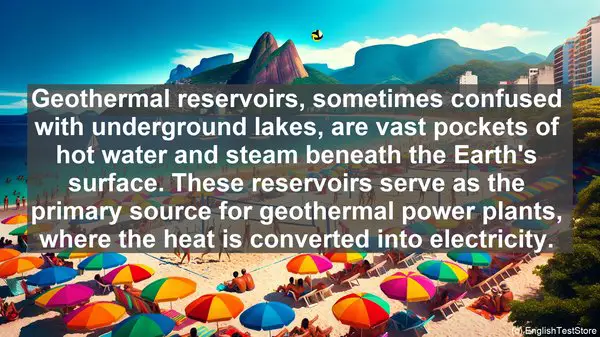Introduction: The Fascinating World of Geothermal Energy
Today, we’re diving into the captivating realm of geothermal energy. But before we delve deeper, it’s essential to clarify some commonly confused words that often arise in this field. So, let’s get started!
1. Geothermal vs. Fossil Fuels: The Difference
While both geothermal energy and fossil fuels involve harnessing the Earth’s resources, they differ significantly. Geothermal energy taps into the Earth’s natural heat, while fossil fuels rely on ancient organic matter. Understanding this distinction is crucial for comprehending the environmental benefits of geothermal energy.
2. Geothermal Heat Pumps: Heat Transfer Marvels
Geothermal heat pumps, often mistaken for traditional heating systems, are a marvel of heat transfer. Unlike conventional methods, these pumps extract heat from the ground during winter and release it during summer. This efficient process not only saves energy but also reduces greenhouse gas emissions.
3. Geothermal Reservoirs: Nature’s Underground Storehouses
Geothermal reservoirs, sometimes confused with underground lakes, are vast pockets of hot water and steam beneath the Earth’s surface. These reservoirs serve as the primary source for geothermal power plants, where the heat is converted into electricity.

4. Geothermal Gradient: The Earth’s Temperature Profile
The geothermal gradient refers to the Earth’s temperature variation with depth. On average, the temperature increases by about 25-30 degrees Celsius per kilometer. This gradient is a crucial factor in determining the viability of geothermal resources in a particular region.
5. Geothermal Direct Use: Beyond Electricity Generation
While geothermal energy is renowned for its electricity generation potential, it has numerous direct uses as well. These include heating buildings, drying crops, and even spa treatments. Exploring these diverse applications showcases the versatility of geothermal energy.
6. Geothermal Power Plants: The Different Types
Geothermal power plants come in various forms, including dry steam, flash steam, and binary cycle plants. Each utilizes different technologies to harness the Earth’s heat. Understanding these distinctions provides insights into the efficiency and environmental impact of each type.
7. Geothermal Exploration: Unveiling the Subsurface
Geothermal exploration involves a range of techniques, from geological surveys to drilling. These methods help identify potential geothermal resources and assess their feasibility. The exploration phase is a crucial step in any geothermal project.
8. Geothermal Emissions: A Cleaner Energy Option
Compared to fossil fuels, geothermal energy is a cleaner option. While there are some emissions associated with geothermal power plants, they are significantly lower than those from coal or natural gas plants. This aspect highlights the environmental advantages of geothermal energy.

9. Geothermal and Solar: A Synergistic Pair
Geothermal and solar energy complement each other exceptionally well. In regions where sunlight is abundant, solar power can be harnessed during the day, while geothermal energy provides a consistent source of electricity round the clock. This combination ensures a reliable and sustainable energy supply.
10. Geothermal Potential: A Global Resource
Geothermal energy has immense potential worldwide. While some countries, like Iceland, have already tapped into this resource extensively, many others are yet to fully explore it. Recognizing this potential is crucial for a sustainable and diversified energy future.
